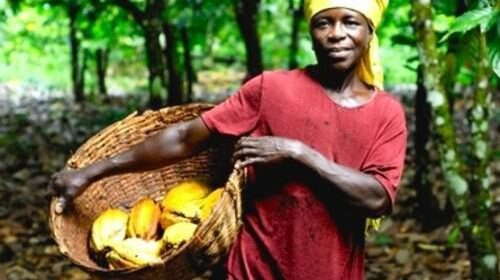AN INTRO TO THE CAMEROON COCOA AGRO-FORESTRY SECTOR | THE STATUS QUO
Posted By Deodatus Bijengsi on Dec 7, 2016 | 0 comments In his address to the nation, on Jan 1st 2003, his Excellency Paul Biya, the president of the republic of Cameroon advocated for an “agrarian revolution” given that agriculture is one of the main exports which fuels the economy of Cameroon,. It is impossible to talk agriculture in Cameroon and not talk about cocoa. It is only right that we look at status quo of cocoa industry in Cameroon and where it is heading Cameroon is the fourth highest cocoa producing country in West Africa which itself is the highest cocoa producing region in the world. There are eight main cocoa producing countries worldwide: Ivory Coast, Ghana, Indonesia, Nigeria, Brazil, Cameroon, Ecuador and Malaysia. In the last cocoa season Cameroon produced 269,496 metric tonnes compared to 183,297 tons produced ten years ago (2006/2007). The price of cocoa is also on the rise. The price this year stands at about FCFA 1600 compared to FCFA 640 ten years ago. Cameroon in the just ended season exported 239,716,907 tons of cocoa 97 percent of which was grade II to Netherlands, Belgium, Germany, Italy, and Spain. Netherlands alone imported 76, 30 percent of Cameroon’s cocoa. These are the numbers for Cameroon cocoa to the world! Within her boundaries about 75% of the population have cocoa as their main cash crop. Therefore the state of the cocoa industry directly affect the economy of the country in both the macro and the micro levels. Despite the positive numbers above, the cocoa Agro Forestry sector in Cameroon has much yet to be desired. The pitfalls abound. Tcharbuahbokengo Nfinn ( the Director General of The Federation of Environment and Ecological Diversity for Agricultural Revampment and Human Rights (Feedar & Hr), Cameroon, in 2005 outlined three main stumbling blocks of this sector in Cameroon. First, there is the lack of knowledge. Knowledge is power. Yea I know; cliché! But it is true nonetheless, even more so in this case. There are many aspects of the industry that these farmers are clueless about. To say this puts them on the disadvantage is understating the issue at hand. There is the privatization and all its ramifications, marketing dynamics, technical know, rights to land and the other legal concerns and the list definitely does not end here. Then there is poverty. This is a colossus of a problem. A fast majority of the...
Read more












